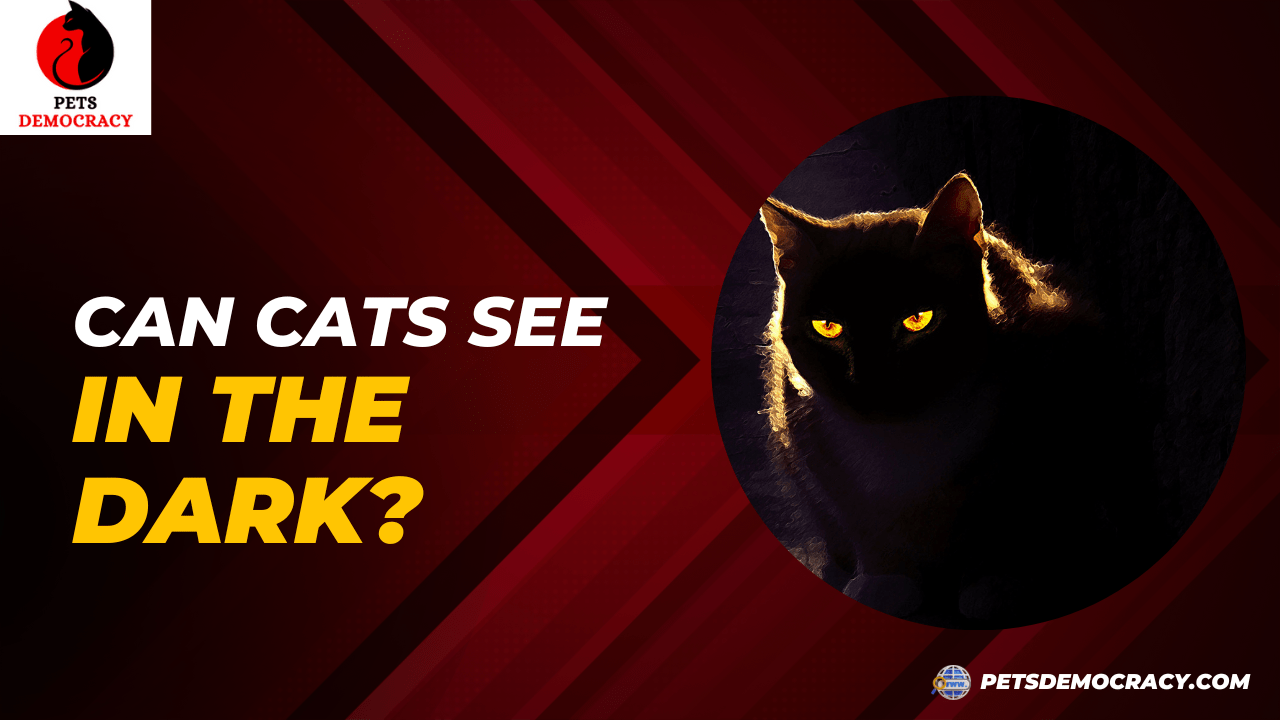
Have you ever wondered if can cats see in the dark? It almost seems like they possess a superpower that allows them to see clearly when there’s barely any light.
In this article, we will delve into the fascinating world of a cat’s night vision and explore the question: can cats see in the dark?
We will uncover the anatomy of a cat’s eye, understand their night vision capabilities, and unravel the science behind this incredible ability. So, let’s embark on this enlightening journey and discover the secrets behind a cat’s extraordinary vision.
The Anatomy of a Cat’s Eye
To comprehend a cat’s night vision, it’s crucial to first understand the intricate structure of their eyes. Cats have eyes that are specifically designed for nocturnal activities.
They possess a unique combination of large pupils and a high number of rod cells in their retinas, which allows them to gather as much available light as possible.
Additionally, the tapetum lucidum, a reflective layer present behind their retinas, enhances their night vision by reflecting light through the retina. This structure acts like a mirror, maximizing the utilization of even the tiniest amount of light.
Understanding a Cat’s Night Vision
Now that we’ve explored the anatomy of a cat’s eye, let’s delve into how their night vision works. Cats have a remarkable ability to adjust their pupils, which enables them to regulate the amount of light entering their eyes.
In bright conditions, their pupils constrict to reduce the influx of light, while in dim lighting, their pupils dilate to capture more light. This adaptive feature allows them to maintain optimal vision in various light conditions.
Additionally, cats have a significantly higher number of rod cells compared to humans. Rod cells are responsible for detecting motion and distinguishing between light and dark.
This abundance of rod cells equips cats with superior night vision capabilities. They can detect even the slightest movement in low-light conditions, making them highly skilled predators during nighttime hunts.
How Well Can Cats See in the Dark?
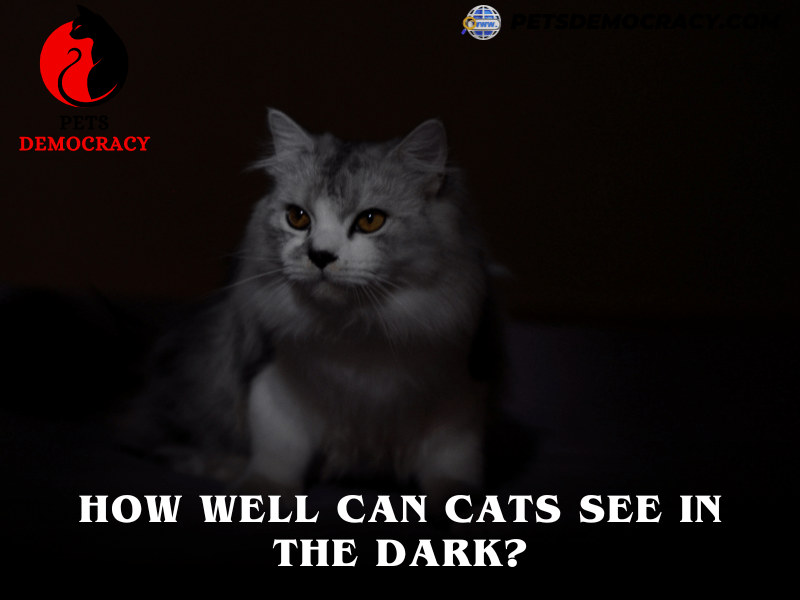
Cats possess the ability to see in almost complete darkness, making them the true masters of the night. Their exceptional night vision is primarily due to the combination of their large pupils, highly reflective tapetum lucidum, and a high number of rod cells.
While they cannot see in total darkness, they can function remarkably well when there is minimal available light. This unique adaptation allows them to navigate their surroundings, hunt for prey, and explore their environment during nighttime hours.
What Age Can Cats See in the Dark?
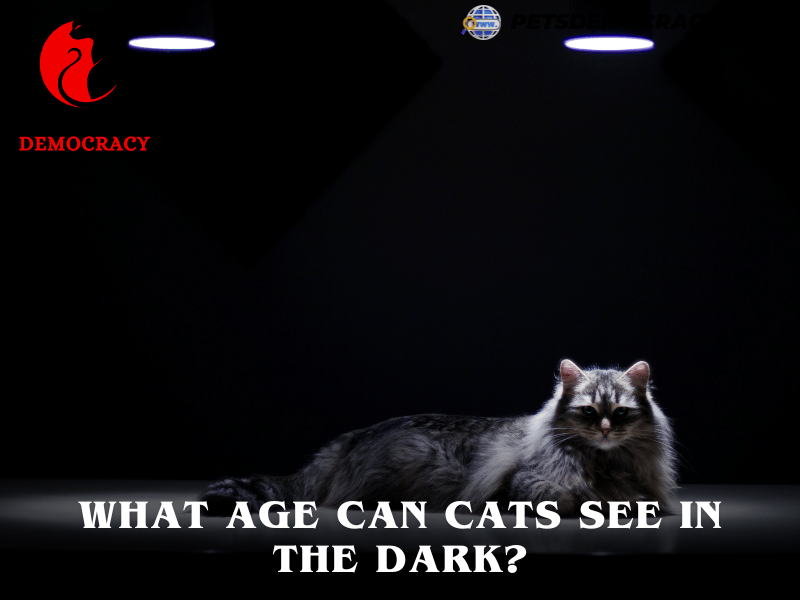
Cats are born with closed eyes and gradually develop their ability to see over time. Their eyes typically start opening when they are around 7 to 10 days old.
However, their vision is still very limited during this early stage. It takes approximately 2 to 3 weeks for their eyes to fully open, and even then, their vision is not as sharp as that of adult cats.
As kittens grow, their eyesight improves, and by the time they are around 5 to 6 weeks old, they can start to see more clearly, even in dim light. It is truly remarkable how quickly cats develop their night vision skills from a very young age.
Exploring the Superpower: How Can Cats See in the Dark?
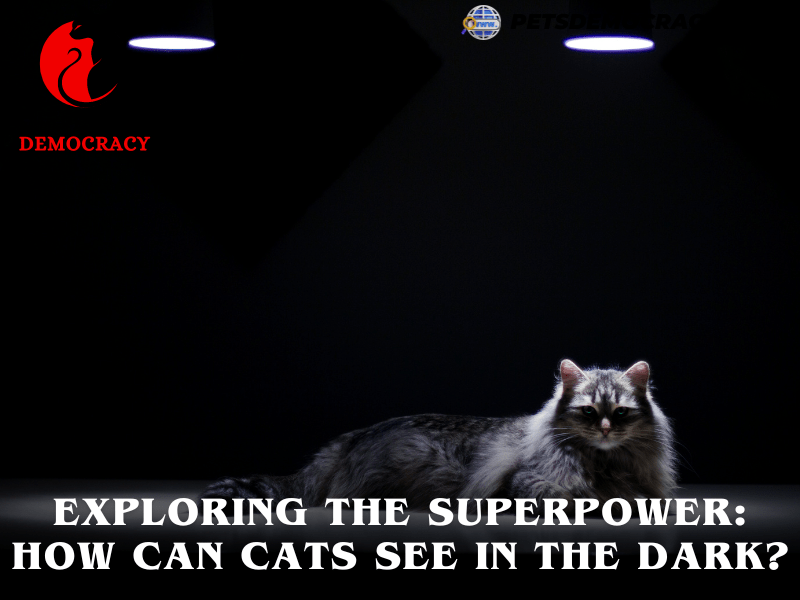
The ability of cats to see in the dark is not limited to their eye structure alone. Their brain also plays a significant role in processing the visual information received.
The feline visual cortex, which is responsible for interpreting visual signals, has adapted to efficiently process low-light images. This adaptation allows cats to make sense of the limited light available and perceive their surroundings accurately.
Furthermore, cats’ eyes contain a higher concentration of photoreceptor cells called cones, which are responsible for color vision.
While cats have limited color vision compared to humans, they can still perceive some colors, even in low-light conditions. This skill helps them distinguish between different objects and perceive depth, adding to their overall night vision capabilities.
Can Cats See Color in the Dark?
Although cats have the ability to see some colors, their color vision is not as vibrant as that of humans.
Cats are dichromatic, meaning they have two types of cones in their eyes that are responsible for color perception. Humans, on the other hand, are trichromatic, possessing three types of cones. This difference in the number of cones results in cats having a more limited color range compared to humans.
In low-light conditions, the cones responsible for color vision are less effective, and cats rely more on their rod cells for sight.
Therefore, while cats can perceive some colors in dim lighting, their ability to distinguish between shades and perceive vivid colors is significantly reduced.
What Colors Can Cats See in the Dark?
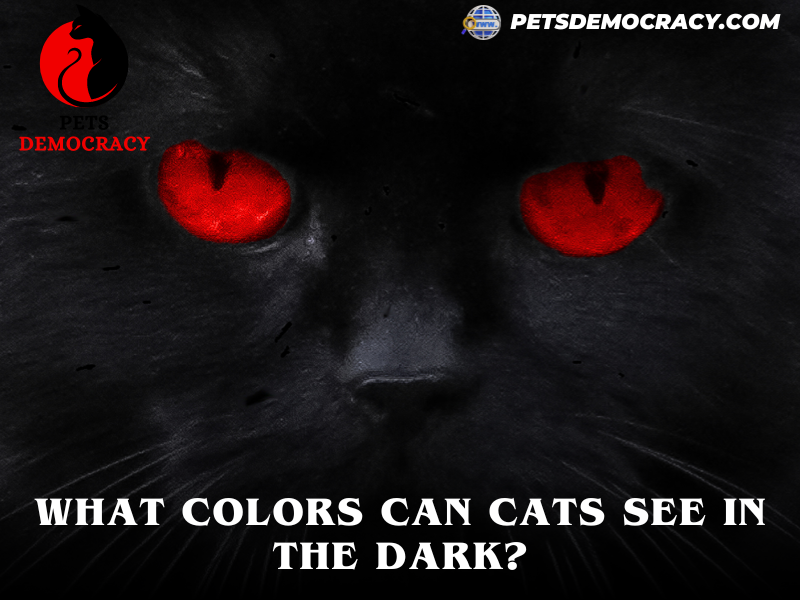
Cats’ color vision is often described as being similar to that of a person with red-green color blindness. They primarily perceive colors in the blue and green spectrum, while reds and pinks may appear more muted.
This limited color range is due to the specific wavelengths of light that cats’ eyes are most sensitive to. While their color perception is not as comprehensive as ours, it still aids them in differentiating objects and detecting movement in low-light conditions.
The Science Behind a Cat’s Night Vision
The unique night vision capabilities of cats can be attributed to a combination of factors. As mentioned earlier, their large pupils allow more light to enter their eyes, and the tapetum lucidum reflects this light back through the retina, maximizing its utilization. Additionally, the high concentration of rod cells in their retinas enables them to detect even the faintest light and motion.
The tapetum lucidum also plays a crucial role in amplifying the available light. It reflects any light that passes through the retina back onto the rod cells, essentially giving them a second chance to detect the light. This amplification effect enhances cats’ night vision and grants them the ability to see clearly in low-light conditions.
Factors That Affect a Cat’s Night Vision
While cats possess exceptional night vision, certain factors can affect their ability to see in the dark. Age is one such factor.
As mentioned earlier, kittens have limited night vision capabilities initially and gradually develop them as they grow. Similarly, older cats may experience a decline in their night vision due to age-related changes in their eyes.
Other factors that can impact a cat’s night vision include certain medical conditions, such as cataracts or glaucoma, which can impair their vision regardless of lighting conditions.
Additionally, environmental factors, such as the presence of bright lights or extreme darkness, can also influence a cat’s ability to see in the dark. It’s important to consider these factors when assessing a cat’s night vision skills.
Conclusion
In conclusion, cats possess a remarkable superpower that allows them to cats see in the dark.
Their unique eye structure, including large pupils, a reflective tapetum lucidum, and a high number of rod cells, equips them with exceptional night vision capabilities. Cats can navigate their surroundings and hunt for prey with ease, even in minimal lighting conditions.
While their color vision is more limited compared to humans, cats can still perceive some colors in low-light conditions.
Their ability to see in the dark is a result of a combination of factors, including their eye structure and the efficient processing of visual information in their brain. It’s truly fascinating how cats have adapted to thrive in the darkness and utilize their superpower to its full extent.


